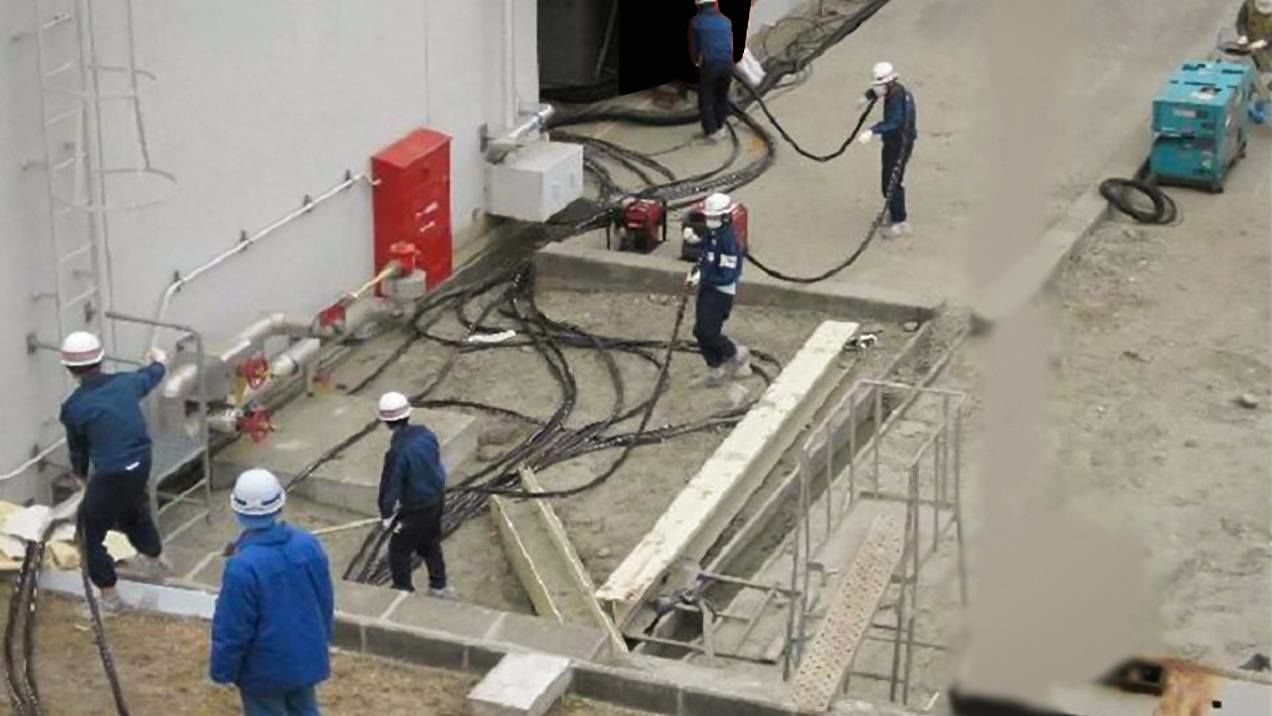
The Heroic Mission to Save Fukushima Daini
Society Disaster- English
- 日本語
- 简体字
- 繁體字
- Français
- Español
- العربية
- Русский
The Terrifying Reality of a Tsunami
At the moment of the March 11, 2011, earthquake, the four 1.1 gigawatt boiling-water reactors that comprised the Fukushima Daini Nuclear Power Station, straddling the towns of Naraha and Tomioka, Fukushima Prefecture, were all operational. Plant superintendent Masuda Naohiro rushed to the crisis room, where operations manager Mishima Takaki informed him, to his relief, that all four reactors had shut down automatically. The first response to any nuclear accident can be summarized in three steps: shutdown, cooling, and containment. The first of these had now been achieved.
While the crisis room did receive a tsunami warning, the men say that at that time they were not worried about the tsunami. Masuda admits that while he had seen videos of the Sumatra tsunami a number of times, before 3/11 he was unable to really appreciate the power of these waves that can wash away buildings.
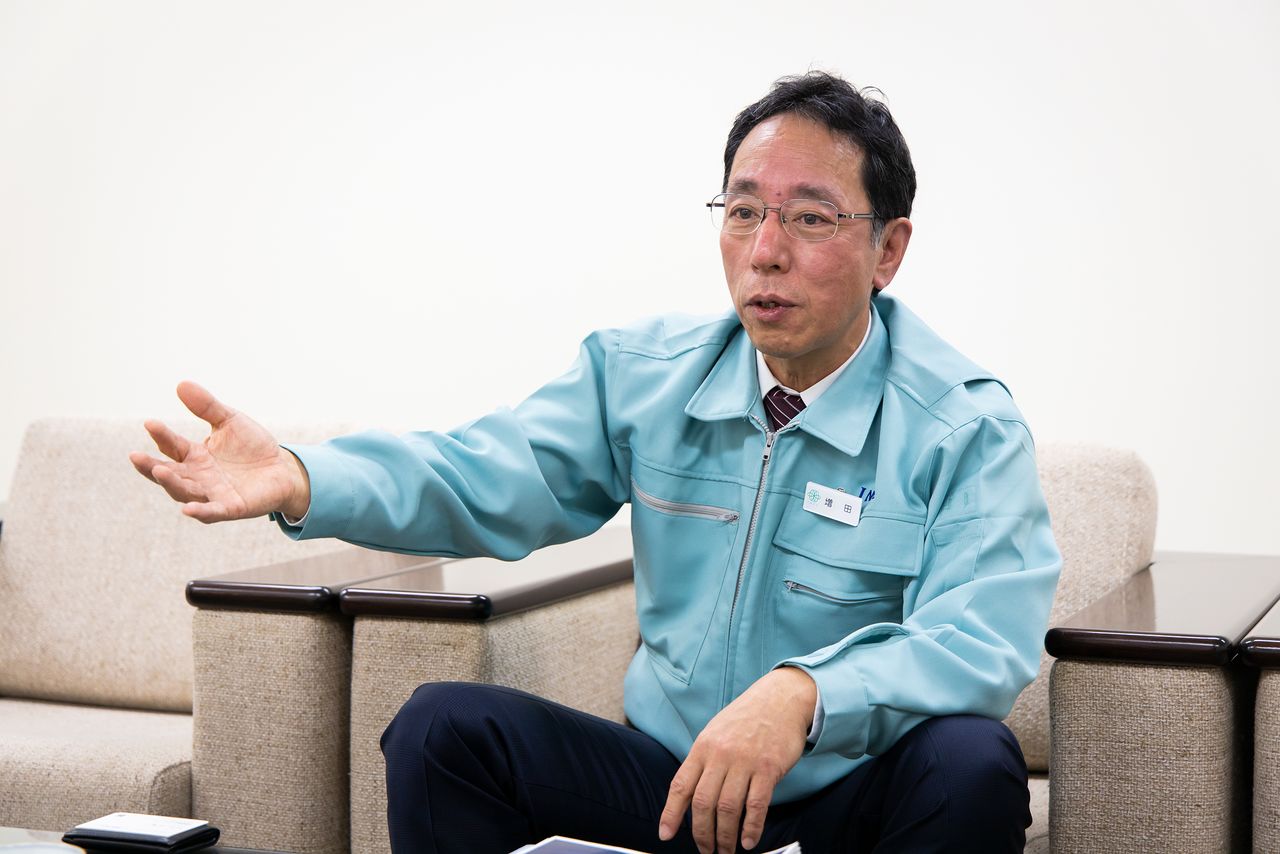
Japan Nuclear Fuel CEO Masuda Naohiro was superintendent of Fukushima Daini when the 3/11 disaster struck.
Mishima echoes these comments.
“I believed that if we simply followed the standard procedure of injecting water to cool the reactors to below 100 degrees centigrade, we would be fine. If anything, I was more concerned about the effect on greater Tokyo of suddenly losing 4.4 gigawatts of power,” he says.

Mishima Takaki, today the Fukushima Daini superintendent, was the power station’s operations manager 10 years ago.
At around 3:30 pm, the tsunami hit, easily crossing the protective seawall around the facility and striking the plant. On the coastal side of plant, eight heat exchanger buildings, two for each reactor unit, are lined up in a row. These heat exchangers are designed to dump excess heat into the sea in the event of an emergency shutdown. Breeching steel doors, the tsunami completely flooded the buildings housing the heat exchangers, inundating the equipment inside. The second step in the “shutdown, cooling, containment” procedure was now in jeopardy.
The tsunami rushed up the road beside the southernmost, number one reactor, reaching an elevation of 16 or 17 meters above sea level. The area surrounding the seismically isolated bunker that housed the crisis room was also inundated. While the workers in the windowless crisis room could not see what was happening outside, Masuda and Mishima said that when the room suddenly lost power, they realized something terrible was happening.
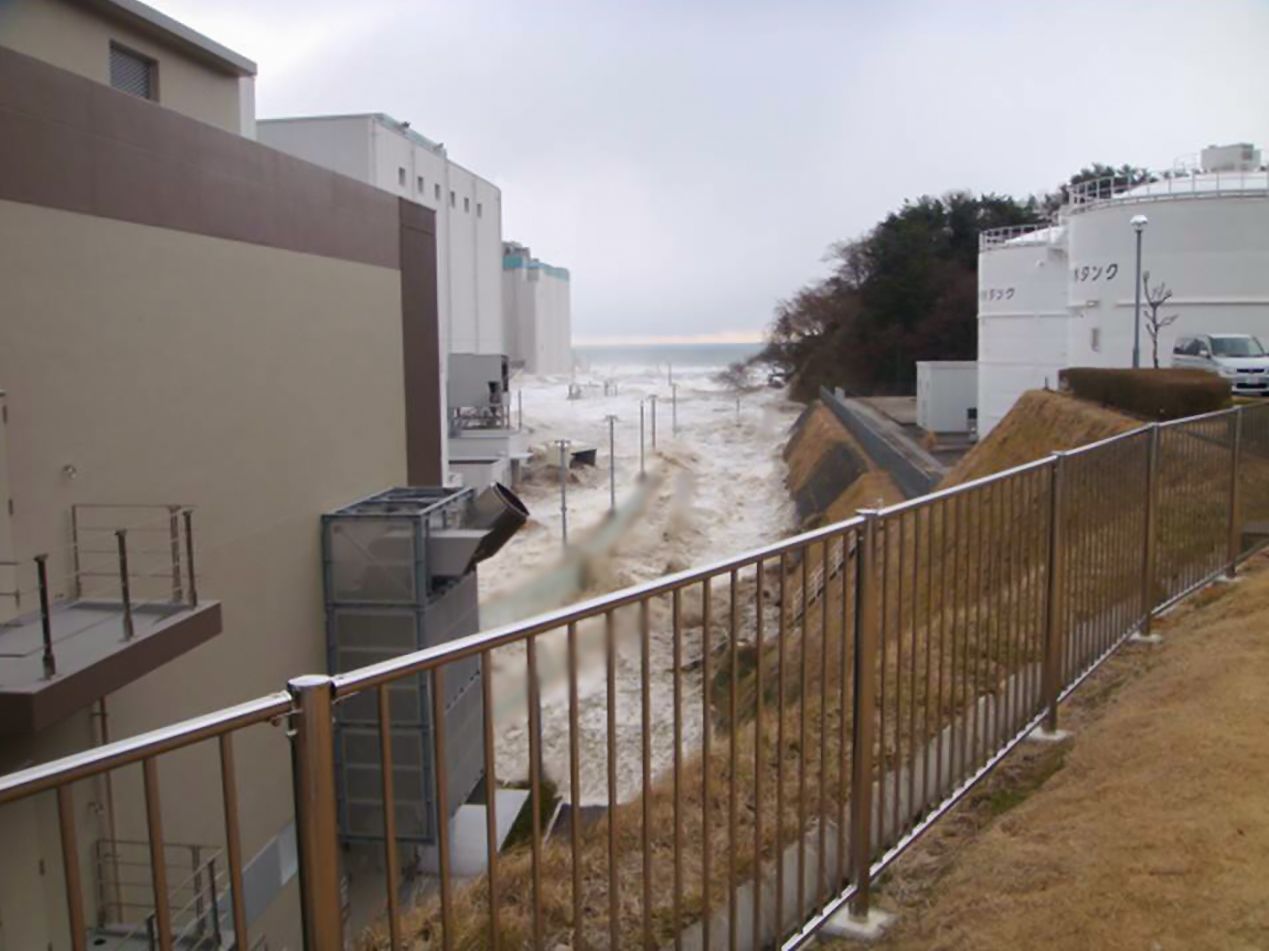
The tsunami flowed up alongside the reactor building. (Edited image courtesy of TEPCO Holdings)
Restoring Cooling
The Fukushima Daini plant is normally supplied with electricity by four external power lines, one for each reactor unit. Of these, one was out of service as part of scheduled maintenance, and a further two were knocked out by the earthquake, leaving a single functioning power line, which would be the plant’s lifeline. By running cables from the one unit that still had power, workers were able to restore power to the crisis room. The team in the station’s central control room was also able to accurately monitor the state of the reactors using a variety of instruments.
Mishima, who was in charge of controlling the plant’s operations, recalls.
“Masuda and I both come from a design background. We had subjected the plant’s design to extensive testing, and were therefore confident in our ability to judge what the plant was able to withstand in a given set of circumstances, and how we could work around the loss of a given function. We also drew fully on the experience and knowledge of the workers at the plant and used a variety of tricks to keep the reactors cool.”
By buying time, Mishima enabled Masuda to concentrate on the job of getting the cooling system working again. Nothing could be done until they understood the current status of the plant, however. Aftershocks continued into the night, each one sending up cries of distress in the crisis room. Terrified that the plant might be hit by a second tsunami, Masuda was reluctant to send his workers on a reconnaissance mission.
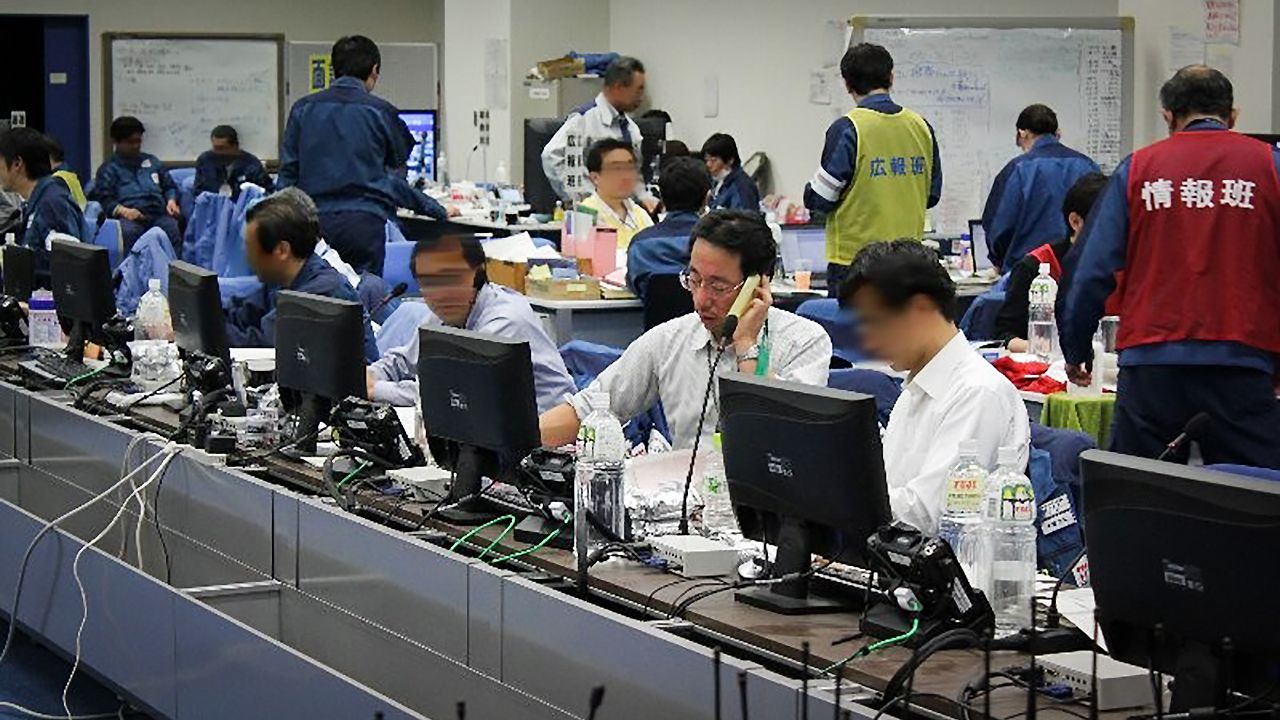
Masuda directing his team at the crisis room. (Edited image courtesy of TEPCO Holdings)
However, a sudden thought made Masuda go to the whiteboard and begin writing the times and intensities of all the aftershocks.
“What’s that you’re writing, sir?”
Passing workers stopped to peer at the whiteboard. Masuda was able to visually convey, and make intuitively obvious to everyone in the room, the fact that the intervals between aftershocks were getting longer.
While a tsunami warning was still in place, Masuda told his team, “If we don’t go and check now, we won’t be to start the recovery operation tomorrow morning. If we don’t time this right, we will endanger the reactor.”
At 10:00 pm, Masuda made the call to send four teams of 10 workers each out to inspect the heat exchanger buildings.

Masuda recalls the dramatic events of March 11.
Upon reaching the building, reconnaissance team member Inoue Takashi could not believe the sight that greeted him.
“The tsunami had smashed in the doors and the building was underwater, with fish swimming around. I couldn’t believe it was the same building I had seen so often when doing inspections or maintenance. I didn’t need to see the equipment to know that the situation was hopeless.”
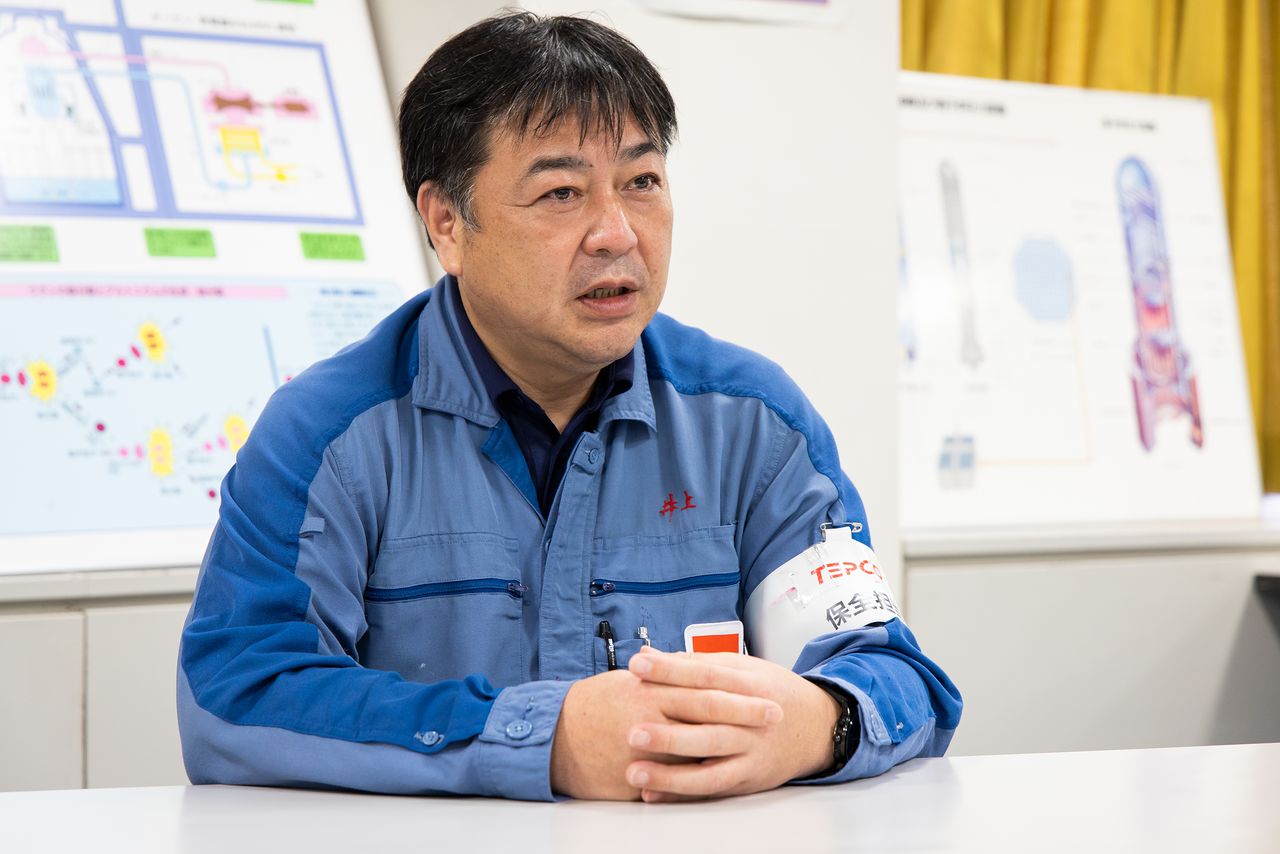
Inoue Takashi, then a safety officer at Fukushima Daini.
A Difficult Decision
Upon being briefed by his teams, Masuda immediately ordered motors from Toshiba’s Mie plant and TEPCO’s Kashiwazaki-Kariwa Nuclear Power Station in Niigata, as well as cables and truck-mounted generators from around the country. He also requested TEPCO’s branches and contractors to send backup.
Of the eight heat exchanger buildings, only the building on the south side of Unit 3 had miraculously escaped damage. That reactor was still being cooled, thankfully. The members of the reconnaissance teams believed that by using cables to share the reactor three power supply with reactors one, two, and four, which were arranged in a line, they would be able to restore cooling relatively quickly.
This proposal was rejected by Masuda, however: “We’ve got to protect the Unit 3 cooling system at all cost. Don’t overload it.”
Instead, Masuda directed his team to obtain power by running cables from a waste-processing building some 800 meters away. The cables were 5 centimeters thick and weighed about 5 kilograms per meter. The team laid a total of 9 kilometers of cables, which they snaked around buildings and other obstacles. While the task would normally take 20 people using construction equipment an entire month, a team of 200 TEPCO employees and contractors were able to complete the task in just 30 hours, finishing late on March 13.
The team knew from news reports and internal videoconferences that the situation at the nearby Fukushima Daiichi plant was deteriorating.
Inoue says, “Our motivation was not a fear that the same thing could happen to us. Rather, we were motivated by the idea that we must not allow the same thing to happen to us.”

A team of 200 laid cables to restore reactor cooling. (Photo taken September 2020)
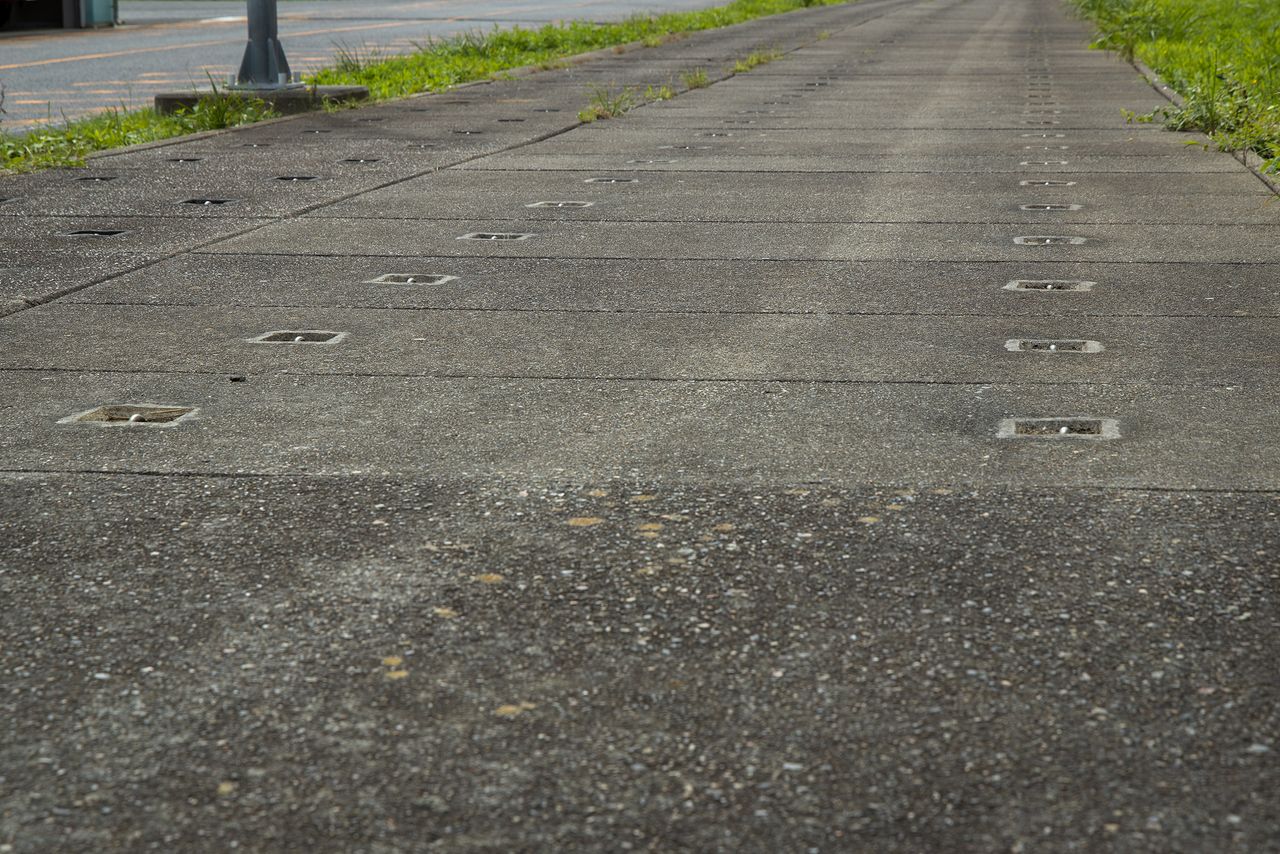
On the grounds of the Daini plant you can still see where the cable was laid a decade ago. (Photo taken September 2020)
While the team was frantically laying cables, the temperature of the suppression pools in Units 1, 2, and 4 hit 100°C, pushing the pressure inside the reactor containment vessels close to their design limits. Step three of the “shutdown, cooling, and containment” process was therefore also touch and go. Everything that happened at the Daiichi plant was being repeated at the Daini plant half a day later, says Masuda.
Mishima recalls, “We’d been injecting water constantly, so we were confident that the fuel rods were undamaged. It was unlikely that the venting of steam to reduce the pressure inside the containment vessels would have resulted in the release of radioactive material.”
Mishima says that his team had decided that if all else failed, they would vent the reactors. However, venting steam at the Daini plant after the Daiichi plant had just done the same would have thrown not only the local community, but also the rest of the country, into panic.
“We wanted to do everything we could to avoid that. There was our motivation,” says Mishima.
Logistical Hurdles
So that the plant’s cooling systems could be restored as soon as possible, TEPCO asked the Air Self-Defense Force to fly in the motors it had procured from a heavy engineering factory operated by Toshiba, which had built Units 1 and 3. After plant workers took delivery of the motors at Fukushima Airport and transported them to the site, however, they found that they were unable to lift the motors off the back of the truck. This is because with the transportation and installation of equipment usually handled by external contractors, TEPCO’s employees never needed to operate construction equipment, nor had any experience with such tools. When pushed to the limit, it was all the team could do to laugh at how powerless they were. Eventually, TEPCO called on the few remaining contractors on site to help them lift the motor off the truck and install it. In order to connect the cable to the motor, insulation needed to be removed and terminals attached. One of the experienced engineers employed by a contractor saved the day.
Finally, at just after 1:00 am on March 14, the cables were attached to the motor, thereby restoring cooling to Unit 1, the least stable of the reactors. Two hours later, and the plant workers would have had to vent steam from the reactor containment vessel to the atmosphere. They only just made it in time.
Masuda did not sleep a wink in the 100 hours between the time of the earthquake and the time that cooling was restored.
“I knew we had a crisis on our hands, but I never felt that things were desperate,” he says. Rather, it was just a matter of understanding the problem, considering a response, and issuing instructions, and then repeating this process again and again.
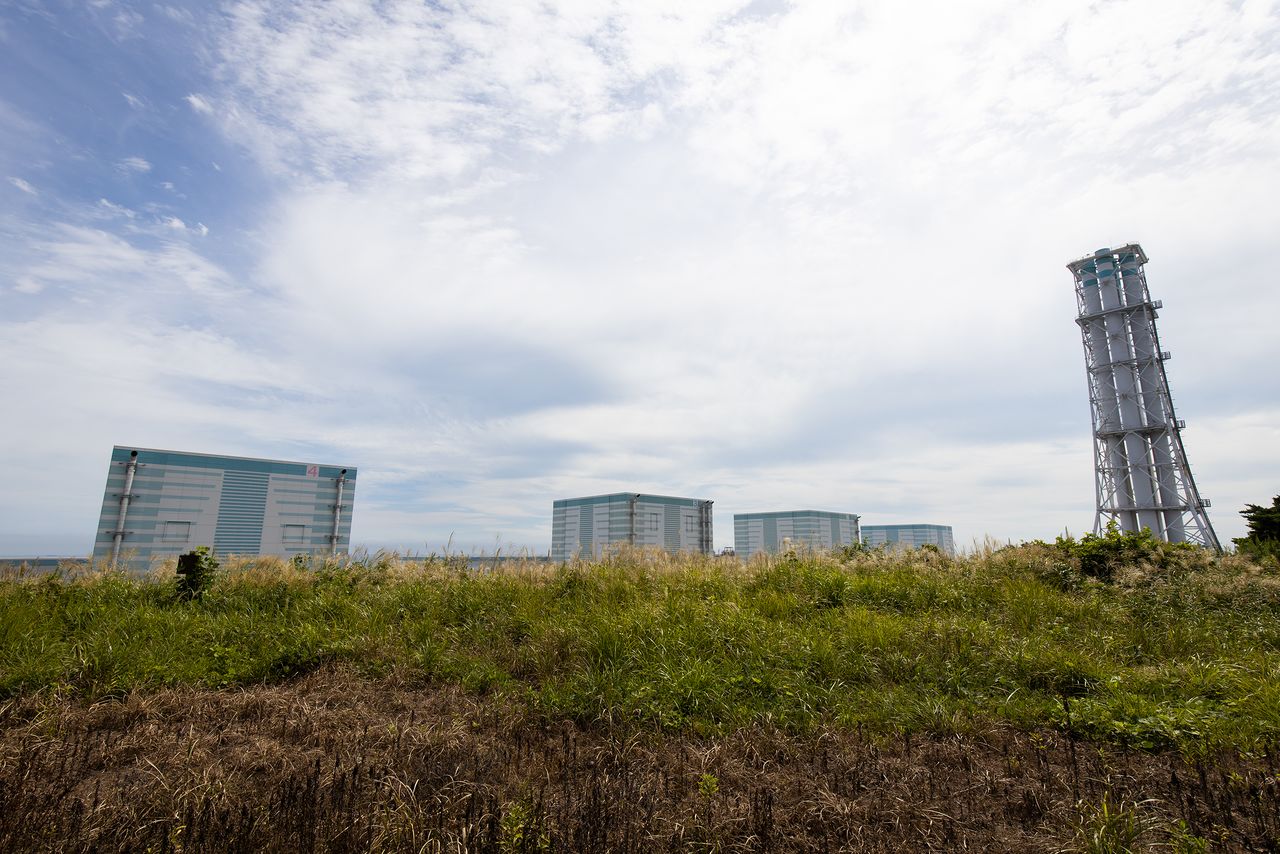
The Fukushima Daini nuclear plant. Unlike at the Daiichi plant, the reactor buildings are still intact.
Expecting the Unexpected
Unlike the Fukushima Daiichi plant, which experienced a total loss of power, the Daini plant was lucky to maintain its external power supply, but this is not to say that the plant overcame the crisis without a struggle. It was only thanks to a leader who made a series of difficult decisions and staff who worked tirelessly to protect the plant that an accident was avoided.
Ten years after the Fukushima Daiichi disaster, evacuation orders for the surrounding areas have been lifted, with the exception of the exclusion zones that remain in force in Futaba, where full evacuation orders still stand, and six other municipalities in the prefecture. However, the occupancy rate in areas now habitable again is a mere 30% of the previous population, and primary producers in the agriculture and fishing industries and many other residents of Fukushima have seen the reputation of their produce and livelihoods plummet. Meanwhile TEPCO, whose lack of preparedness contributed considerably to the accident, will never be pardoned, facing up to its role in the accident forever.
When writing this article, I never intended to paint anyone as a hero. At the same time, I believe that by tarring all TEPCO employees with the same brush, and always treating the utility as the bad guy, we deprive ourselves of the opportunity to learn a valuable lesson. The Great East Japan Earthquake and tsunami taught us to expect the unexpected. No matter how high you build a seawall or how robust you make a power plant, there is no guarantee that it will not be compromised by an unforeseen event.
Masuda says, “The basic response of ‘shutdown, cooling, and containment’ remains unchanged. Rather than attempting to build plants that will withstand any manner of unforeseen event, we need to train our people to be able to properly execute those three steps so that we can take measures as appropriate.”
Meanwhile, the humiliating experience of being forced to laugh at their own powerlessness has prompted the TEPCO employees at Fukushima Daini to get digger and crane licenses, and the plant still conducts periodic rubble removal drills.
(Originally published in Japanese. Masuda Naohiro was interviewed on March 5, 2021 and Mishima Takaki and Inoue Takashi on September 16, 2020. Banner photo: Employees of the Fukushima Daini plant lay cables to restore cooling systems lost after the tsunami. Edited image courtesy TEPCO Holdings. All photos taken by Hashino Yukinori of Nippon.com except where otherwise indicated.)
Fukushima TEPCO Great East Japan Earthquake tsunami Fukushima Daiichi